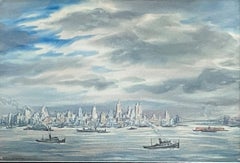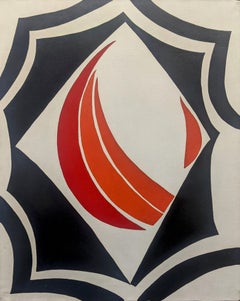Lincoln Glenn Paintings
1940s American Modern Landscape Drawings and Watercolors
Paper, Watercolor
1970s Contemporary Landscape Paintings
Canvas, Acrylic
1960s Pop Art Abstract Paintings
Canvas, Acrylic
1960s Folk Art Landscape Paintings
Paper, Watercolor, Ballpoint Pen, Color Pencil
Early 20th Century Impressionist Landscape Paintings
Oil, Board
1880s Barbizon School Landscape Paintings
Canvas, Oil
Mid-20th Century Impressionist Landscape Drawings and Watercolors
Paper, Watercolor
1890s Realist Still-life Paintings
Canvas, Oil
Late 20th Century American Realist Landscape Paintings
Paper, Casein
Late 20th Century Abstract Abstract Paintings
Gold, Foil
1930s Modern Still-life Paintings
Canvas, Oil
1930s American Impressionist Landscape Paintings
Canvas, Oil
1970s Abstract Expressionist Abstract Paintings
Canvas, Acrylic
1850s Hudson River School Landscape Paintings
Canvas, Oil
1920s Post-Impressionist Landscape Drawings and Watercolors
Paper, Watercolor
1860s Hudson River School Landscape Paintings
Canvas, Oil
1970s Contemporary Figurative Paintings
Oil, Board
1910s American Impressionist Landscape Drawings and Watercolors
Paper, Watercolor
1890s American Impressionist Landscape Paintings
Canvas, Oil
Early 20th Century American Impressionist Landscape Paintings
Paper, Oil
1920s American Modern Still-life Paintings
Canvas, Oil
Early 20th Century Impressionist Landscape Paintings
Canvas, Oil
1890s American Impressionist Landscape Paintings
Canvas, Oil
Mid-20th Century American Modern Landscape Paintings
Paper, Crayon
Early 20th Century American Impressionist Landscape Drawings and Waterco...
Paper, Watercolor
1970s Modern Landscape Paintings
Masonite, Oil
2010s Contemporary Abstract Paintings
Canvas, Oil
1980s Abstract Abstract Paintings
Paper, Mixed Media
1910s American Impressionist Figurative Paintings
Canvas, Oil, Board
Late 19th Century Hudson River School Landscape Paintings
Canvas, Oil
Early 1900s American Impressionist Paintings
Canvas, Oil
Early 2000s Contemporary Landscape Paintings
Enamel
1970s Hard-Edge Abstract Paintings
Canvas, Oil, Acrylic
1980s Abstract Expressionist Abstract Paintings
Canvas, Oil
1960s Abstract Expressionist Abstract Paintings
Canvas, Oil
1950s American Impressionist Landscape Paintings
Oil, Cardboard
1920s Landscape Paintings
Canvas, Oil
1980s Abstract Expressionist Abstract Paintings
Canvas, Oil
1920s American Impressionist Landscape Paintings
Canvas, Oil
1950s Folk Art Figurative Paintings
Canvas, Oil
Early 1900s American Impressionist Landscape Paintings
Oil, Panel
1940s American Modern Landscape Paintings
Canvas, Oil
1990s Abstract Expressionist Abstract Paintings
Canvas, Oil
1980s Abstract Expressionist Abstract Paintings
Canvas, Oil
1990s Surrealist Figurative Paintings
Canvas, Oil
1910s American Impressionist Figurative Paintings
Canvas, Oil
1910s Ashcan School Nude Paintings
Canvas, Oil
1920s Hudson River School Landscape Paintings
Canvas, Oil
1950s American Impressionist Landscape Paintings
Oil, Board
1980s Pop Art Portrait Paintings
Board, Pastel
Early 2000s Contemporary Figurative Paintings
Oil, Canvas
1910s American Impressionist Landscape Paintings
Oil, Canvas
1980s American Modern Landscape Paintings
Canvas, Oil, Board
Mid-20th Century Realist Figurative Paintings
Granite
1970s Feminist Abstract Paintings
Mixed Media, Board
1840s Hudson River School Figurative Paintings
Paper, Watercolor
1930s American Realist Landscape Paintings
Canvas, Oil, Tempera
Early 20th Century American Impressionist Landscape Paintings
Canvas, Oil
1920s Tonalist Landscape Paintings
Canvas, Paint, Oil
Mid-20th Century American Realist Landscape Paintings
Canvas, Paint, Oil

